Courses
The Teeth of the Dog Experience
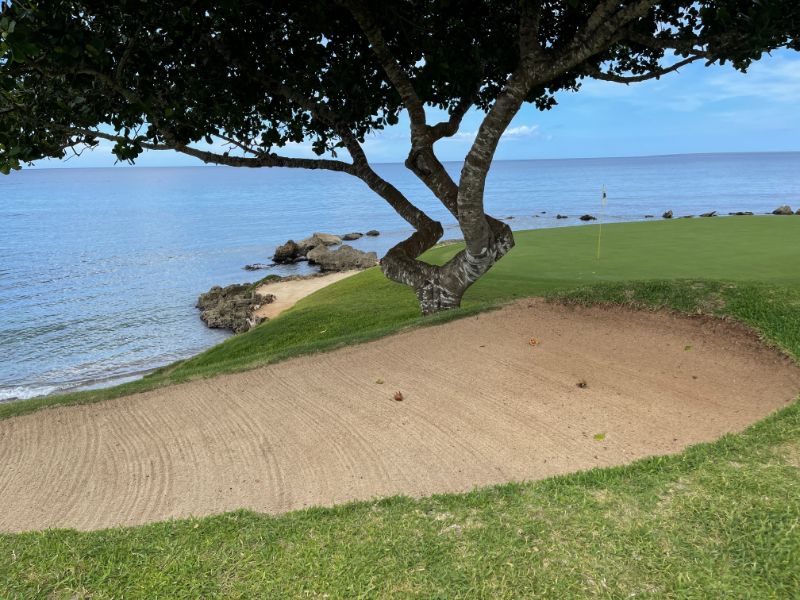
Teeth of the Dog. Even the name is daunting. Rated the number one course in the Caribbean and number 32 in the world in the 2020 Golf Digest Course Rankings, the Pete Dye masterpiece on the south shore of the Dominican Republic lives up to the name. I visited the island with the sole purpose of playing the course, often described as Dye’s signature build, but what I ultimately found at the Casa de Campo resort in the town of La Romana was so much more than just Teeth of the Dog. My goodness.
THURSDAY
I traveled, once again, with the old man. My dad is an able and willing golf companion and he was eager to leave the heat of our North Texas climate to escape to the Caribbean for a long weekend. The pandemic, ever-looming, created some hesitation but our research into the resort and their on-site testing and safety protocols eased our concerns. We made the trip. And the trip went smoothly.
Direct flights are available from DFW (as well as many other major cities) to Punta Cana and the airport was clean and efficient. A stay at Casa de Campo comes with a shuttle service to and from the airport provided by Prestige. More on them later, but I will tease by saying they are a tremendously useful and honest company.
We arrived around 5 p.m. and it’s a 50-minute ride to the resort. We headed straight to the main resort restaurant, La Cana, for a dinner overlooking the pool. Quite a start. I could immediately tell this place was wonderful.



Casa De Campo sits on 7,000 acres and is home to not only Teeth of the Dog, but three other golf courses, one of which is private. The other Dye course that we played, called Dye Fore, is actually three very unique nine-hole loops called Marina, Lagos, and Chavon. A round at Dye Four lets you pick which two of the three nines to play.
When you check into Casa, they give each room their very own gas-operated golf cart to navigate the property. Trust me, you need it. The activities and restaurants are sprawled about every corner of the property, but there seems to be four key locations: the Marina, Altos de Chavon, the beach club, and the main resort hotel.
Our room overlooked the 10th fairway of Teeth of the Dog and was basic yet comforting in its design. Everything you need in a golf resort.




FRIDAY
Friday was our first round of golf at Dye Fore. You could call it a warm-up round for Teeth of the Dog, which is what I initially considered it as. But I can tell you that the Marina and Chavon are still Pete Dye designs, and with that comes pot bunkers, elevation, beauty, and challenge. The first nine holes for us was the Marina, which starts with a wide-open par 5 that goes down before it goes up to an elevated green. It felt like a course that was going to be fun right off the bat.



Dye Fore has a variety of total yardages, depending on which nine-hole tracks you decide to pair together. Each nine is named for the spectacular views found on each course. The Marina course provides just that: views of the not-so-distant marina at the mouth of the Chavon River, where the freshwater meets the sea. The gold tees played just under 7,000 yards on the Marina-Chavon combo and it felt every bit of that. There are, however, six different sets of tees for all abilities and ages.



The greens and fairways are pure. This course is incredibly well maintained. This part of the Dominican gets about 40 inches of rainfall per year and the climate is obviously tropical. The Marina nine was really fun but not quite as “Pete Dye” as I was expecting. It felt a bit more resort course than I would have pegged for Mr. Dye.
Spectacular views of the river and ocean, but this side also has quite a bit of mega-mansions worth gazing at. One of the notable aspects of Casa de Campo is that the property is home to many villas and homes owned by people with, quite obviously, a ton of money. Lebron James was rumored to be visiting days before our arrival, shopping for a property to purchase. Lionel Messi had recently vacationed there earlier this month, per his Instagram. The place is a playground for the uber-rich, which just gives us “every man” golfers something else to ogle at while we enjoy the decently (~$200) priced golf for the quality of courses provided.




Many of the villas are resort-owned or affiliated and can be rented out as a part of your stay at Casa de Campo. Pretty incredible setting for a golf buddy trip if that is your speed and style. The resort website also lists several “stay and play” packages, which can include unlimited golf and food as a part of the pricing. I’d recommend going with the food package as we later found out the dining on-site was as good as the golf, and I tend to eat more than I play on trips like this.


The Chavon Course, in contrast to Marina, is largely isolated from the rest of the property and its villas. Instead of large homes and views of the bay, you get seven scenic cliffside holes dropping over 300 feet to the Chavon River. And I don’t say this lightly, but the views on this course rival the oceanside holes of Teeth of the Dog. It was amazing.
And challenging, to boot. There aren’t many trees on this side and the afternoon wind was up. The par 3s played long and the closing ninth (18 for us) is a beautiful par-five right into the breeze. The clubhouse for Dye Fore overlooks the number one tee and the nine green from above, along with the Chavon River, and is a great spot to have a Presidente Beer.

Number one tee of Chavon from clubhouse

Ninth fairway and green from clubhouse


The Chavon nine was as enjoyable a nine holes as I have played in a long time. Every hole is good and the views are just crazy amazing for an inland course. I was genuinely stunned. We could see hotel guests on boats and kayaks exploring the Chavon River, which looked like a lot of fun. But I preferred my view from the course.

Dye Fore Clubhouse and Bar



This course is 100% pure Pete Dye. Bunkers everywhere you look and long enough to be enjoyably painful. I have been fortunate enough to do stories on several Dye courses (TPC Scottsdale, TPC Louisiana, Whistling Straits, TPC San Antonio) and Chavon measures up. It is not quite as consistently challenging as the other courses listed above, but it has its moments of sheer dye-abolical punishment. And the views, ah the views, leave you asking for more.
The signature pot bunkers have become, at least to me, sandy memorials to Mr. Dye on nearly every hole. We miss you.





Altos De Chavon
Just down the road (walking distance) from the Dye Fore clubhouse is Altos De Chavon, a replica 16th-century Mediterranean village. Yes, you read that correctly. This charming little collection of shops and restaurants overlooks the Chavon River and golf course and is a real-life time machine. Complete with a huge 5,000 seat amphitheater used for local music and shows, Altos de Chavon was such a unique experience. The amphitheater opened in 1982 and Frank Sinatra gave the inaugural performance, which, believe it or not, was televised on HBO.




We spent an hour or so just walking around, questioning whether this place hadn’t really been here forever instead of built in the last 1970’s. Ultimately and hungrily, we settled at Chilango Taqueria, and I had the best tacos of my life. This is high praise coming from a kid from Texas, but I mean it. The steak taco is thinly cut steak wrapped in cheese and a pickle spear-sized slice of avocado. The flavor was oustanding. This place was so good we actually came back two days later for lunch, the only restaurant we repeated all trip.





The village is only open to resort and villa guests, keeping the streets free of large crowds. St. Stanislaus Church is on-site and has regular mass each week. There are also active art studios and galleries from local Dominican artists, as well as an archeological museum. I don’t know who came up with the idea of Altos, but I am grateful to them for allowing me the chance to visit.
Lesson with Teaching Pro Eric Lillibridge

That afternoon, my dad took the first golf lesson of his life. We met with Head Teaching Professional Eric Lillibridge, who gave the stubborn golfer a short game lesson on chipping and putting. Lillibridge, who after an hour of time with us proved himself to be a first-class teacher, is also just a fun guy to hang out with. Originally from California, he hopped around professional tours a bit before accepting the job at Casa de Campo and moved to the Dominican full time. In speaking with him about his life and journey, I can say confidently he is happy right where he is. And that feeling comes through in his golf lessons and the way he speaks about Casa de Campo.
The practice facility is first class. TrackMan is utilized in two covered hitting bays along with a full short game area. My dad, who is typically averse to any form of practice, left the lesson with a smile on his face and a few swing tips in his mind for the next round. That was fun to see. He even said that he wishes Lillibridge lived in Texas so he could take more lessons with him.
Thanks so much, Eric.




Dinner at the Marina
Casa de Campo, as you can tell, can fill up your day. You can make this a beach and relax vacation if you’d like (see: tomorrow) but it also has enough to do to fill every hour of your trip. On top of the golf and dinner options, there is also a shooting range for clay pigeon shotgun shooting, horseback riding and polo fields, tennis facilities and a petting zoo for kiddos. All reachable with your golf cart.



We took our cart down to the marina for dinner, which is more than just a marina. The resort has built another residential and shopping community, which has a European plaza feel. The center of the crescent-shaped community is home to a half dozen or more restaurants, one of which was called Causa, where we had a real nice meal. Causa’s menu was a hybrid of Peruvian food (think creole) and Japanese dishes. The sushi was awesome and something I wasn’t really expecting in the Dominican.




Saturday
We woke up and had breakfast at Lago. Overlooking the 9th green at Teeth of the Dog and adjacent to the clubhouse, this made-to-order style breakfast has everything you need. Omelets, local dishes and fruits, smoothie bar, pastries, you name it. Not a bad spot for a meal, with the ocean in the distance, knowing that soon you’ll be alongside the water hoping your golf ball finds the green. And then it was time.



Teeth of the Dog
The entrance to the Teeth of the Dog clubhouse is guarded by a wonderful tribute to Pete Dye, complete with a bronze statue and his signature pot bunker right in front. Walking to the pro shop, you can’t help but realize that the experience you are about to have is going to be a special one. It’s why you came all this way. And it’s why Mr. Dye came all this way too.





The pro shop is spacious and well equipped. All the major brands are available, from Polo to Under Armour, and there was a large variety of clothing and gear for women and kids, too. That isn’t always the case for many courses, as we know. I spent a fair amount of time in the shop, as I usually do, and couldn’t really identify anything that was missing. I’m a sucker for Peter Millar’s golf shirts, and they had plenty for everyone. Even mediums.


The lockerroom has a real old-world charm to it. Open-air and the locker boxes slide out and don’t lock. The showers feel like they belong on the beach. This was my first round of golf in the Caribbean, but I feel like all island locker rooms and clubhouses should feel this way. The nineteenth hole is also attached, and completely open-air as well, overlooking the number one tee box and the practice putting green.




Teeth of the Dog gets its name from the jagged coral rocks that surround the coastline around both the course and much of the island. As the course was being built, many of the locals remarked that the rocks resembled the pointy canine teeth of dogs, and the moniker stuck.
The course opened for play in 1971 and Dye, ever modest, was quick to acknowledge that he was only responsible for the design of 11 of the golf holes, while God created the seven that hugged the ocean.

The course, from the tips, plays to 7,263 yards with a slope rating of 76.0/135. The gold tees are sub 7,000 yards, however, and the blues reach 6,429.
Teeth begins somewhat benign, with a sub-400 yard par four with ever-present bunkering from tee to green. If you don’t like sand traps, just don’t play Pete Dye courses. I do want to mention the second hole because what would’ve been a very run-of-the-mill 375 inland par 4 was, instead, made very memorable with some creative design. The tee shot forces a slight carry over a large bunker complex that follows along the entire left side of the hole, but half of that bunker is filled with round stones that make any errant ball unplayable. Wooden fence posts also stand erect around the border of some of the bunkers, which serve no real purpose other than to make the hole look cool. I liked it.

Hole #2 from tee

Hole 2 green
Holes three and four continue out towards the ocean, but you finally get a glimpse of the sea. Good holes in their own right (there isn’t a bad hole out here–it’s one of the best courses in the world for a reason), the ocean finally being so close only gets you excited to finally make that turn and get seaside.


The par-three fifth is the course’s signature hole. The tee shot plays about 155 yards to a tiny green with the ocean left and behind. In front is a small tree, protecting the right side of the green and rejecting low shots back into a bunker and beach just below. Yes, a literal beach, with incoming waves and everything. Ask my dad, he will tell you.




Holes six, seven, and eight continue along the sea, with the shore on your left, and honestly, it was all a bit of a blur. You want to play well, but you also just want to take it all in. It was reminiscent of holes six through ten at Pebble Beach, but the water is so much closer and in play here at Teeth. Gorgeous golf.
Hole seven with worth singling out, since it is a 222-yard par three over water. Gracefully there is a bunker fronting the green to catch any short tee shots from rolling back into the saltwater. Still, this hole is an absolute beast. Beautiful and terrifying, just like the ocean herself.


Teeth of the Dog turns back inland on the back nine. With four of the first nine holes being along the ocean, my basic arithmetic skills told me there were more of those holes “created by God” to be played. Hole 13, a 180-yard par-three, is a pretty great inland hole. The green is islanded by sand on all sides and a tree just left of the green. You cannot reach the green without walking through the bunker, which is pretty unique.
There is also a little bar hut set up on the 13th tee serving ice-cold Presidente beer. Yes, sir, it’s the island life for me.



Teeth of the Dog did not waste the seven oceanside holes with a boring remaining course. The architecture does not ignore simple design techniques that make the internal holes aesthetically pleasing as well. The bunker island par three, the cobblestone bunkering on #2, uniquely raised stone tee boxes, and the beautiful coffin bunkers all over the fairways, the creative routing with challenging approaches would rank this course highly even without the Caribbean close by. The course even has several ponds that bring fresh water into play.


And then, as you leave the 14th green and follow the path to the right, you see it again. The walk between 14 green and 15 tee box is a special one. The anticipation is thrilling, even though the course has already given you a solid taste of ocean holes, you know you are about to get a second serving.



Holes 15 through 17 are wonderful. The closing stretch is wonderful. Teeth of the Dog is wonderful.
Sixteen is the last par three, once again over the sea, but this time with the water on your right and playing 180 yards from the tips. Just aim for the middle of the green as this hole plays tricks on you. The green is not as horizontal as it appears from the tee, but rather it gets deeper the closer you get to the water. That means that the carry is longer if the pin is right. Club up.




The closing hole turns back to the clubhouse with a devastatingly long and uphill par 4. Playing 473 yards up to the elevated green, it’s a nice way for Mr. Dye to tell you “goodbye and come back anytime you dare to face the Teeth. Enjoy a Presidente and see me again someday.”
Pete Dye is one of the greatest golf course builders this world has ever seen. It was a sad day when he passed in 2020 for all of us who love the game. But his legacy lives on in his work. And it seems clear that there is no course he loved more than Teeth of the Dog. Now I know why.


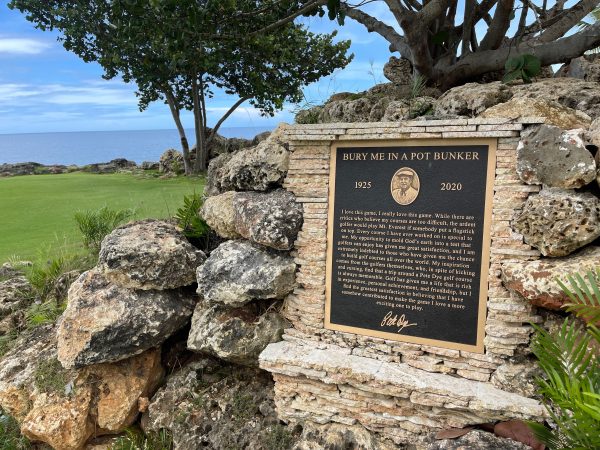
The Beach Club
Dinner after golf was down at the beach club, which gave us an opportunity to soak up some rays and jump into the cold water that so many of our golf balls had enjoyed earlier that day. Beach access, like everything else on the property, is just a short golf cart ride away. The beach itself is typical for the island…gorgeous white sand crystal clear blue water. The Caribbean is just the best.


There is a full bar, large swimming pool, showers, and food trucks at the beach, which honestly gives you every reason to stay there all day. The Beach Club itself is also open to all guests, but it provides an adult-only pool and full restaurant. We had dinner there our final night, a great way to say goodbye to Casa de Campo.




Time to Say Goodbye
The flight out the following day was not until 5 p.m. Unfortunately, a Tropical Storm had hit in the early morning hours and rain continued for most of the day. So we stayed around the main resort building, ate some lunch, and thought back on the weekend we just enjoyed.
Prestige Shuttles arrived on time to take us to the Punta Cana airport, and upon arrival and check-in with our airline, my dad realized he had left his wallet in the car. I got on the phone and called Casa de Campo, hoping they would be able to get our driver, Enrique, on the phone so he could somehow come back to the airport. We figured our chances of that happening was low, so we crossed through security and my dad began canceling his credit cards on his phone. A nightmare.
But an airport official found us, told us Enrique was here with the wallet, and my dad was escorted beyond security to greet him. Enrique was smiling, happy to see him again and to return such a valuable item. That is the kind of service you get with Prestige, with Casa De Campo, and, in my opinion, with the people of the Dominican Republic.
We came for Teeth of the Dog. We left with a brand new appreciation for the beautiful island and the wonderful people it propagates. I can not wait to go back.

If you want help planning your next golf experience or just have questions about some of mine, reach out to me on Instagram and shoot me a message. And definitely check out my other golf experience articles. I look forward to hearing from you!
Courses
Ryder Cup 2025: Crossing to Bethpage – NY state park golf, part 3
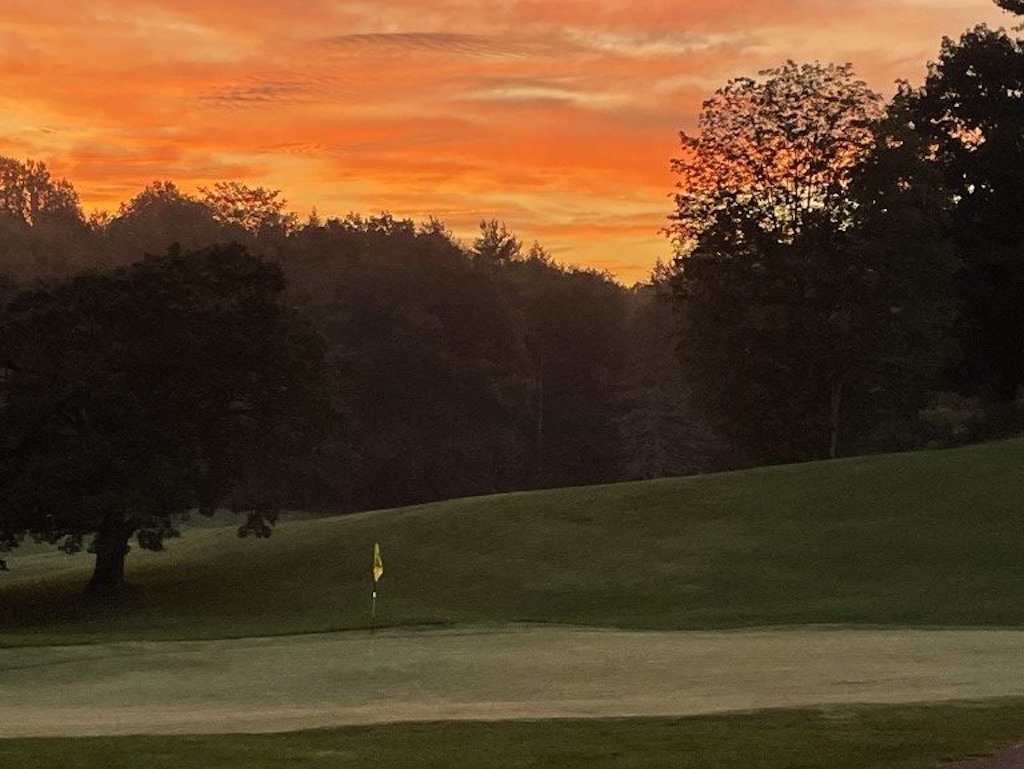
The history of the acquisition of lands for state parks and properties is a varied one across the Empire State. The first state park, Niagara Falls, was established in 1885. Many of us locals would love to have a scenic golf course located on Goat Island, with holes that ease their way next to Horseshoe, Niagara, and Bridal Veil Falls. We do understand, however, that the parkland is better suited to accessibility by and for all residents and visitors.
Work on state parks, especially the introduction of golf courses, ramped up in the 1930s, thanks to President Franklin Delano Roosevelt’s Civilian Conservation Corps and Works Progress programs. The state continues to acquire lands today, to preserve open spaces and critical habitats. For the golfing faithful, the 24 state-owned golf course properties offer affordable and accessible municipal golf.
The birth story of the 24 golf courses has the following chronology:
Battle Island – 1919
Sag Harbor – 1926
Bethpage Green (as Lenox Hill) 1923; Blue and Red – 1935; Black – 1936; Yellow – 1958
Green Lakes – 1935
Saratoga Spa – 1936
James Baird – 1948
Wellesley Island – 1960
Dinsmore – 1962 (18 hole expansion)
Sunken Meadow – 1962 (18), 1964 (third 9)
Soaring Eagles – 1963
Indian Hills – 1964
Beaver Island – 1965
Chenango Valley – 1967 (18 hole expansion)
St. Lawrence – 1967 (18 hole expansion)
Montauk Downs – 1968 (current design)
Rockland Lake – 1969
Robert Moses Pitch and Putt – 1970
Bonavista – 1970
Springbrook Greens – 1995
From the golden age of the early 1900s to the end of the last century, the courses of the New York State park system grew from one to many. Some (Lenox Hills) were adopted into the system, while others (Chenango, St. Lawrence, Dinsmore) expanded from nine to eighteen holes. What does the 21st century hold? That’s a tough question to pose, much less answer, but it concludes its first 25 years with one of the most notable golf competitions on the planet, at its flagship park.
It’s easy to divide the 19 parks that host golf courses into regions, but much more challenging to build a tour. Our second trip, to keep the disappointment to a minimum, was scuttled. Simply not enough vacation time for this working stiff to make a trip along Lake Ontario and into the Adirondacks. I’ve played enough golf in the North Country, however, to know how special those upper region layouts are.
Battle Island
From Mary Gregg and the NYS Parks website, we learn a nice amount about Battle Island. Ms. Gregg offers these insights:
“This park derived its name from a battle which took place on a nearby island on the Oswego River in the mid-1700s. In 1916 most of the land owned by F. A. Emerick was deeded to the state. Battle Island officially became a state park in 1938 when the remaining land was turned over. The popular course near Fulton lies adjacent to the Oswego River and offers golfers magnificent views from a number of its
fairways and greens. The 18-hole Battle Island State Park Golf Course is a challenging one for the budding professional and amateur player.“From my own experience working at both Green Lakes and Bethpage; Battle Island is a short course but a challenging one. We don’t have any bunkers on the course, but the greens are quite challenging, hard to find many flat areas for pin placements. The views of the Oswego River are quite manificient throughout the season and bring a variety of wilflife throughout the season as well.”
As a youth, I heard tales of Battle Island’s brief but fierce layout from an uncle, an alumnus of the city’s state university campus. Short hitters have nothing to fear at Battle Island, but the wayward driver of the ball should certainly have a long day over the golf course.
Dinsmore
Dinsmore was expanded to 18 holes in 1962. Tom Buggy penned an insightful history of the course for the Staatsburgh State Historic Site, and we are happy to link it here. The course is the northernmost state park layout along the Hudson River, located in Hyde Park, the retreat of President Franklin Delano Roosevelt.
The history of Dinsmore is an interesting, curvy one. The original nine holes on property were a collaborative affair, built on 1890s land shared by three prominent area families. Known then as the Staatsburgh golf club, the daughter of the original designer would eventually donate the land to New York State, establishing the park that includes the adjacent historic homesite. An additional nine holes were added to the property in 1962. Two years later, the original holes were rerouted to form the current back nine, along the southern portion of the property.
Rockland Lake
The Rockland Lake State Park golf course could be forgiven for the occasional bout of envy. It sits in a neighborhood occupied by some of the mid-Hudson River’s finer private clubs. A half mile away is Paramount Country Club, an A.W. Tillinghast design. Tilly is also credited with the majority of the design work at Bethpage Black, a credit that he shares with Joseph Burbeck. Across the great river sits Sleepy Hollow Country Club, whose lineage involves work by Tillinghast, but mainly from C.B. Macdonald and Seth Raynor. And on and on.
In its origin days, Rockland Lake was used as a natural ice factory by the Knickerbocker company. So pure was the ice that emanated from its waters that the lake supplied much of New York City in those pre-home electricity days. In this new millennium, Rockland Lake plays host in summer months to many of the area’s golfers. Despite its proximity to the waters of the lake, a pond, and the river, none of the holes is within a mighty strike of the wet stuff.
Rockland Lake’s full-size course was designed in the 1950s by David Gordon, a well-traveled, regional architect from eastern New York and Pennsylvania. The big course sits on the northern end of the park. The property also boasts an 18-hole short course, located in the shadows of Hook Mountain, south of the lake that gives the park its name.
Saratoga Spa
Location is often everything. When your golf course is located not only inside a state park, adjacent to a popular performing arts center within the confines of the park, and a nearby, world-famous horse racing track, you have potential for a popular spot. Saratoga Spa’s original golf holes opened in the 1930s, although no architect is given credit for the design. In the late 1950s, William Mitchell did an overhaul of the layout, expanding it to the trace that is in the ground today. During the mid-2010s, Barry Jordan, another regional architect, came in to rebuild the entire 10th green and upgrade bunker drainage throughout the golf course.
Saratoga Spa boasts a testing, 18-hole layout that stretches beyond 7,000 yards. Alongside is a short course, with seven par-three holes and two par-fours. The course features a new fleet of motorized carts with GPS monitors, ensuring that golfers know where they stand at all moments of the round. In addition to the golf course, nearly a dozen natural springs flow through the Saratoga Spa Park. A large pool complex for recreation completes the park’s offerings.
Springbrook Greens
Alan Tomlinson may be the Hayden “Sidd” Finch of golf course architecture. He completed Springbrook Greens in 1995 … then disappeared. Nothing more is known about him, and no other courses bear witness to his skills as a router of golf holes. Springbrook Greens tips out at 5,800 yards and finds itself close to Lake Ontario’s southern shore. If you drew a vertical ray to the south, it would drop a bit west of Syracuse. It’s not much away from Battle Island, so there are a few state courses within a brief drive of each other, in this part of the state.
Springbrook Greens had an interesting first quarter-century of life, then COVID hit, and like many places, things went a bit off path. Fortunately for the region and its golfers, the Randall family leased the course from New York State Parks (much like Bonavista in an earlier step of this series) and brought the course back from a near-death experience. It’s pretty easy for a course to go astray, especially when basic maintenance elements break down. Among the images in the gallery, one will stand out for its lack of grass. Ron Randal tells the story like this:
“This was the 10th green in December the year before I took over. This was the worst but many had large spots that looked like this. I assumed it was a lack of proper maintenance but what I didn’t realize was that a lot of it was just irrigation heads that didn’t work or didn’t work right. This one was missing a head so the front 2 didn’t work at all and of the back 2 only one worked properly. Thank god it was a fairway head or there would have been no grass left at all.
“I assure you it looks better now.”
According to Randall, the fairways are back to what any destination course might offer. Putting surfaces have been expanded back to their original widths, offering a great many hole locations for diversity. Collars around each green and run-up areas have also been added to the course. The course spreads out over nearly 200 acres, is home to diverse, multitudinous wildlife, and amazing views.
Current projects include the rebuilding tees and the addition of back tees, to stretch the tips a bit. Trees have been pruned to allow sun to reach the most sensitive, grass-growing areas (greens and tees). If there ever was a look-at-us-now project among the panel of NYS Park golf courses, Springbrook Greens would give all others some stiff competition.
Saint Lawrence
The St. Lawrence state park course, a nine-hole affair across a wee road from the eponymous seaway, might nip Beaver Island (near Buffalo) for the Closest To Canada prize. The layout sits barely across a road adjacent to the shoreline, less than a mile from Ontario’s beaches. Since the STLS is a bit thinner than the mighty Niagara, it appears that the award goes to St. Lawrence.
St. Lawrence State Park Golf Course is a stand-alone feature, made up simply of a golf course. It was a privately owned layout for many years, near the city of Ogdensburg. The state purchased the acreage in the 1960s and leases the course to it present owners. The St. Lawrence course is a tiny, tidy experience, essentially a series of nine, straightish holes, the fairways are interrupted by the occasional crossing appearance of a wee burn, in the Scottish tradition.
From our inside folks at the course, we received this batch of intel:
“The Ogdensburg Golf Club was started in 1919 by a group of five Ogdensburg area golfers as a private golf and social club. Stock was issued to the original five investors and golfing privileges were obtained by the payment of annual dues to the club. The 151acre golf club, which consisted of five holes along the St. Lawrence River and four holes across New York State Route 37 were sold to New York State on December 18, 1967.“The State of New York had plans to develop the remaining land into an 18-hole golf facility but those plans never came to fruition. The St. Lawrence State Park Golf Course was operated by New York State Parks until May of 2011 when it was leased to Golf Services, Inc. of Wellesley Island, NY.”
Wellesley Island
In the words of Peter McDermott, manager at the Wellesley Island State Park Golf Course, “(It) is a relatively short 9-hole course at 2,695 yards par 35 but the greens are tight and rewards the accurate shot. Some of the more notable holes are two very challenging par 4’s, two drivable par 4’s and two scenic par 3’s. For an added bonus, enjoy the captivating views of the St Lawrence River!”
Unlike its upstream neighbor at St. Lawrence State Park, Wellesley Island sits on the northern bank of the river, but still within the confines of New York State and the USA. The Wellesley course occupies a massive meadow, confined by trees but not defined by them. Rather than build a traditional, tree-lined fairway sequence common to the north country, Wellesley channelled the British Isles tradition of a wide open space for golf.
With one chapter remaining in our story of New York State Parks golf courses, we’re nearing the sad yet proud end to our journey. Still to come is the Long Island sojourn, followed by the Ryder Cup competition itself, at Bethpage Black.
Crossing to Bethpage Part One: Green Laks, Beaver Island, James Baird, the Bethpage Five
Crossing to Bethpage Part Two: Soaring Eagles, Chenango Valley, Indian Hills, Bonavista
Crossing to Bethpage Part Three: You just read it!
Courses
The BEST hidden gem links courses in the UK & Ireland
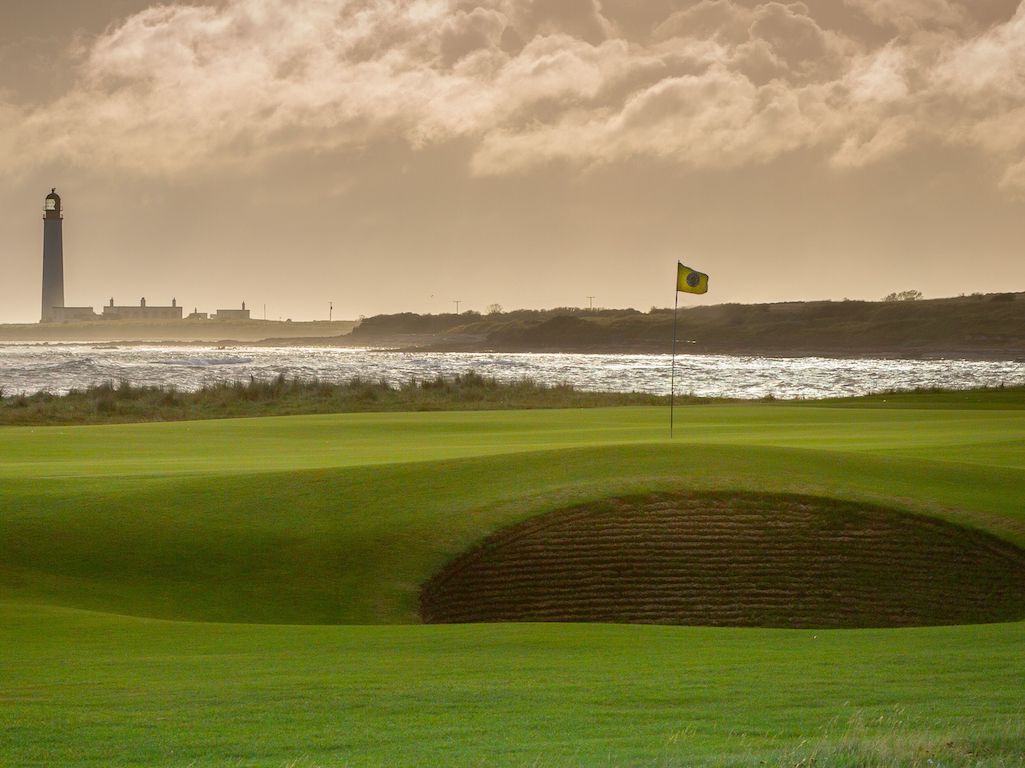
Another Open Championship has come and gone and links golf was once again in the spotlight at Royal Troon! For those who have never played a links course (like myself), it sparks a desire to fly across the pond to experience it for ourselves. While a golf trip to the UK or Ireland is a bucket-list item, most people look to play the big-name courses (Old Course, Carnoustie, Lahinch, Royal Portrush,etc.), but don’t realize they can get a similar experience by traveling to some of the lesser known destinations where you will find some of the purest links courses in the world. With this in mind, here are our picks for the best hidden gem links courses you should play when you book a UK or Ireland trip:
IRELAND
We start our list off with a 36-hole club in the Northwest of Ireland, a remote area of the Emerald Isle that is known for its rugged terrain and spectacular scenery. Bordering the Wild Atlantic Way, Ballyliffin is relatively newer (est. 1947) but offers golfers one of the purest links golf experiences anywhere in the country. While not easy to get to, the two courses onsite (Old and Glashedy) are well worth the travel with large dunes shaping the fairways that overlook the North Atlantic Ocean and a myriad of pot bunkers everywhere you look. Even Rory McIlroy believes that “Ballyliffin’s two courses are a must play on any golf trip to Ireland.” and we tend to agree.

How to incorporate Ballyliffin in a golf trip:
Stay:Ballyliffin Lodge, Hotel & Spa
Play: Old Links & Glashedy Links at Ballyliffin, and Old Tom Morris Links or Sandy Hills Course at Rosapenna
The next course on the list is in the Sligo area of the Northwest where we find Enniscrone, roughly 3 hours (by car) south of Ballyliffin. Like many links courses, Enniscrone was originally a 9-hole course when it was opened in 1918 before an additional 9 holes were added 12 years later. In 1970, Eddie Hackett was tasked with redesigning the course to help the two 9-hole courses flow effortlessly into one 18 hole layout. A big feature that can be seen throughout your round here are the towering dunes that shape the course and protect some holes from the ocean winds. Built right out of the landscape of the dunes bordering the sea, the course has a lot of undulation in the fairways and greens with some elevated tee boxes providing unreal views of the natural land.

How to incorporate Enniscrone in a golf trip:
Stay: The Glasshouse Hotel, Sligo
Play: Enniscrone, County Sligo, and Donegal
Additional Courses: Strandhill, Carne, and Narin & Portnoo
Another fantastic gem on the Northwest coast of Ireland is the NEW (2020) St. Patricks Links at Rosapenna Hotel & Golf Links. The land was purchased back in 2012 which was already a 36-hole facility and Tom Doak was brought in to reimagine the property to the layout it currently is today. Large sand dunes shape the front 9 holes before heading back through some more subtle dunes back towards the clubhouse. The course offers elevation changes with some tee boxes sitting atop the dunes offering spectacular views of Sheephaven Bay and beyond. With two other courses and a fantastic hotel on property, this destination is all you could ever ask for.

How to incorporate St. Patricks in a golf trip:
Stay: Rosapenna Hotel & Golf Links
Play: St. Patrick’s Links, Sandy Hills Course , and Old Tom Morris Links (all at Rosapenna)
For our last hidden gem in Ireland, we head 30 minutes north of the country’s capital, Dublin, to The Island Club. Built along rugged terrain and the highest sand dunes on the east coast of Ireland, the Island Club is situated on a small peninsula surrounded by water on three sides providing a difficult challenge, especially with the winds. Founded in 1890, the Island Club continues to be ranked in the Top 10 courses in Ireland and has held some Amateur Championships and Open Championship Regional Qualifiers.

How to incorporate The Island Club in a golf trip:
Stay: The Grand Hotel, Malahide
Play: Island Club, Portmarnock Old, County Louth
Additional Courses: Royal Dublin
SCOTLAND
Located along “Scotland’s Golf Coast” of East Lothian is where we find the classic links of Dunbar. Opened in 1856 with only 15 holes, this is one of the many courses in Scotland that Old Tom Morris had a hand in crafting. Laid out along rocky and rocky terrain, the course is only 6500 yards long and while not long by modern standards, the course requires shot making and proper club selection to play well. The course has held many national and international tournaments including a few rounds of The Open Final Qualifying.
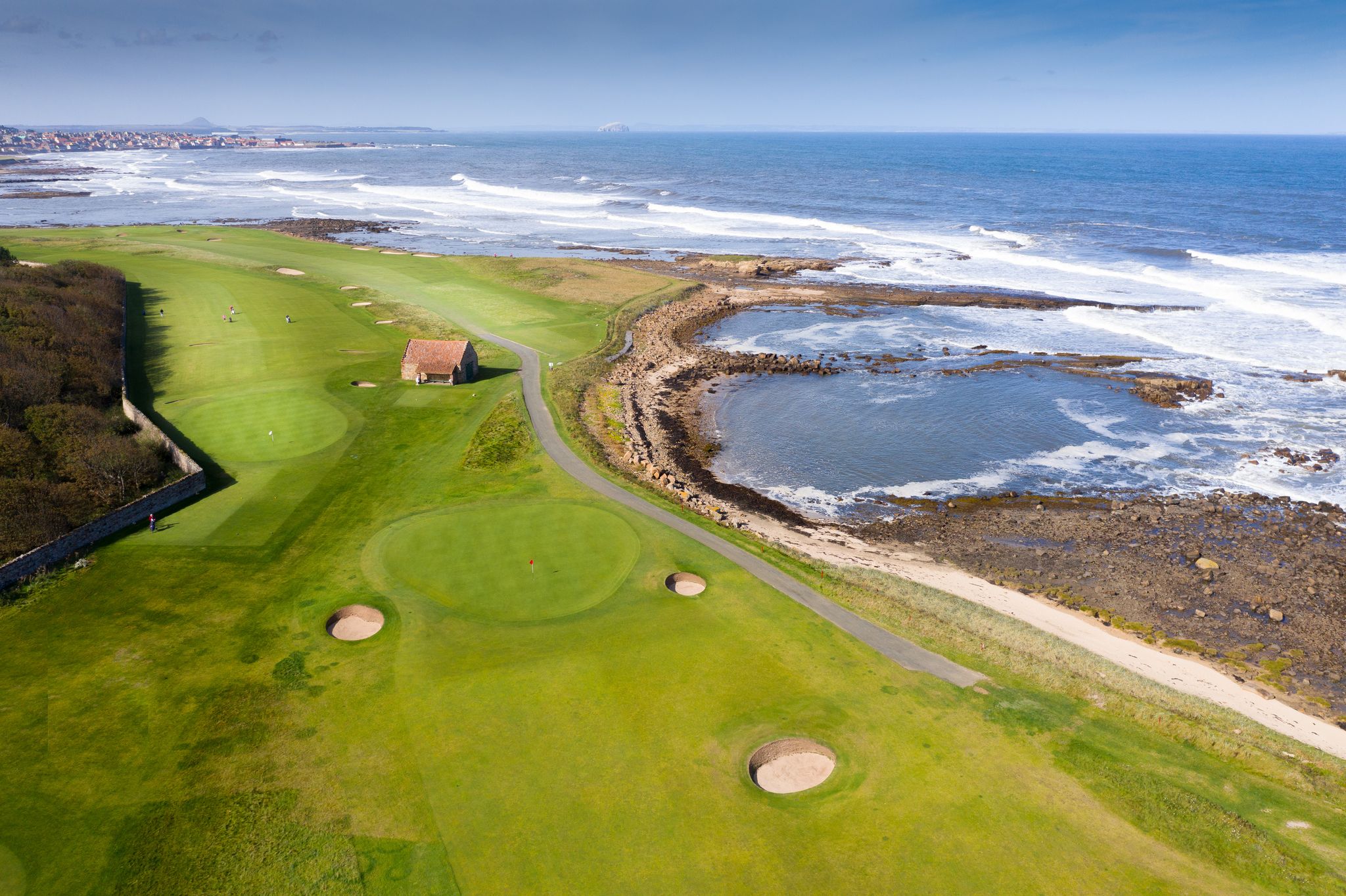
How to incorporate Dunbar in a golf trip:
Stay: No. 12 Hotel & Bistro
Play: Dunbar, Gullane (No.1), North Berwick
Additional Courses: Craigielaw, Kilspindie, Gullane (No.2, No. 3)
The next course on our list brings us to the Scottish Highlands, one of the lesser traveled destinations in Scotland, but still home to some amazing links courses including Cruden Bay! Located 25 miles north of Aberdeen on the east coast of the Highlands, Cruden Bay was opened in 1899, although history would indicate golf has been played at the property since 1791. Another Old Tom Morris design, the course is consistently ranked in the Top 25 of courses in Scotland and it is easy to see why. At only 6600 yards, it is relatively short, but the natural lay of the land provides elevation changes, punchbowl greens, and some large, 3-story high dunes that offer spectacular views for a classic links experience.

How to incorporate Cruden Bay in a golf trip:
Stay: Leonardo Hotel Aberdeen
Play: Cruden Bay, Trump International Links, Royal Aberdeen
Additional Courses: Murcar
We head back to the Highlands just north of Dornoch to where we find Brora Golf Club. Similar to a lot of links courses, Brora opened as only 9 holes in 1891, but that only lasted for 9 years before an additional 9 was added in 1900 before a James Braid redesign in 1924. At just over 6200 yards, this is one of those courses that will make you appreciate links golf in Scotland with cattle and sheep roaming freely around the property. The course is a typical links routing with the front 9 going out and the back 9 coming back to the clubhouse. The defense of the course is the wind (naturally), but the greens are relatively small with pot bunkers standing guard to catch errant approach shots.

How to incorporate Brora in a golf trip:
Stay: Royal Golf Hotel, Dornoch
Play: Brora, Royal Dornoch – Struie & Championship
Additional Courses: Golspie, Tain
Staying in the Scottish Highlands, the last Scotland links gem on the list is just outside of Inverness at The Nairn Golf Club. The narrow fairways are fast and firm leading to decent sized, tricky greens that roll true, but are guarded by devious pot bunkers. The first seven holes play right along the water and with not a ton of elevation changes, spectacular views across the Moray Firth can be seen throughout the course. With fantastic course conditions throughout the season, this fantastic links is an absolute must-play when visiting the Highlands.

How to incorporate Nairn in a golf trip:
Stay: Kingsmills Hotel, Inverness
Play: Nairn, Castle Stuart (Cabot Highlands), Fortrose & Rosemarkie
Additional Courses: Nairn Dunbar, Moray

Golfbreaks by PGA TOUR highly recommends you start planning your trip across the pond AT LEAST 12-18 months in advance in order to secure tee times and hotel rooms over the dates you desire. With more and more people taking up the game of golf, these bucket list trips have already become extremely popular and will continue to gain interest so make sure to start planning early!
RELATED: Open Championship courses you can play (and when the best time to book is)
Editor’s note: This article is presented in partnership with Golfbreaks. When you make a purchase through links in this article, GolfWRX may earn an affiliate commission.
Courses
Open Championship courses you can play (and when the best time to book is)

The final major of 2024 is nearly here as the top golfers head to Scotland’s southwestern coast to battle for the claret jug at Royal Troon. Golf’s original major dates all the way back to 1860 and has been played at 14 different courses throughout the United Kingdom (yes, this includes Northern Ireland) providing countless memories including celebrations, heartbreak, and unique moments that will never be forgotten (looking at you Jordan Spieth).
With The Open teeing off less than a week from now, we wanted to highlight some of The Open Championship’s finest links courses that should play when you make the journey to golf’s homeland:
- Old Course at St. Andrews
- Carnoustie
- Muirfield
- Royal Portrush
- Royal Troon
- Royal Birkdale
- Royal St George’s
Old Course at St. Andrews

Do we even need to say anything else? The “Home of Golf”, host of 30 Open Championships, the most coveted tee time in the WORLD, there are a million reasons to have St. Andrews on your links golf bucket list. From the double greens, to the tee shot over the Old Course Hotel, to the walk up 18th fairway with the town buildings framing a picturesque scene (especially at dusk), every golfer should make the voyage to St Andrews at least once in their life.

Carnoustie

Carnoustie – Championship Course
Roughly 25 miles north of St. Andrews lies the devious links of Carnoustie, often recognized by the large white Carnoustie Golf Hotel as the backdrop of the 18th green. While the course has only hosted The Open 8 times, it is considered to be one of the hardest layouts in The Open rota (just ask Jean Van de Velde) although not that long, playing just under 7000 yards from the tips.
Muirfield

Located right next to this week’s host of Scottish Open (The Renaissance Club), this fantastic links layout has hosted the prestigious Championship 16 times since 1892. The narrow fairways and penal rough requires precise shots off the tee while avoiding the devious pot bunkers is a must. The course is set away from the coastline so you won’t get the sweeping ocean views, but a round at Muirfield is one the premier tee times in all of Scotland (so make sure you book early – 12-18 months at least).
Royal Portrush

A view of the new 572 yards par 5, seventh hole designed by Martin Ebert on the Dunluce Course at Royal Portrush Golf Club the host club for the 2019 Open Championship in Portrush, Northern Ireland. © 2018 Rob Durston
Our next stop brings us across the Irish Sea to the northern coast of Northern Ireland and the popular Royal Portrush. Having hosted The Open only twice in its illustrious history, Royal Portrush is a golfer’s dream with 36 holes of pure links golf set against a gorgeous backdrop of the ocean and cliffs. The Open Championship will return to Portrush in 2025 and YOU CAN BE THERE to watch it all in person!
Royal Troon

TROON – JULY 26: General view of the ‘Postage Stamp’ par 3, 8th hole taken during a photoshoot held on July 26, 2003 at the Royal Troon Golf Club, venue for the 2004 Open Championships, in Troon, Scotland. (Photo by David Cannon/Getty Images)
The host of this year’s Open Championship, Royal Troon is home to one of the best par-3 holes in all of golf, “The Postage Stamp.” A downhill 125-yard tee shot to a minuscule green surrounded by bunkers on all sides makes it one of the more challenging holes. Another hole that adds to the challenge is the 601-yard par 5 that used to be the longest golf hole in Open Championship history. This year will be the 10th Open Championship held at Royal Troon, the first since 2016 when Mickelson and Stenson had a battle for the ages in the final round.
Royal Birkdale

For the next course on the list, we have to head down to the northwest coast of England just outside of Liverpool. Consistently ranked in the Top 10 courses in all the UK, this 10-time host of The Open has hosted many other prestigious events such as Ryder Cups, Women’s Opens, and more! The course is laid out with fairways running through flat-bottomed valleys surrounded by high dunes which provide many blind shots throughout the course. The Open returns to Royal Birkdale in 2026 so it won’t be long before it is back in the spotlight.
Royal St. George’s

For the final course on our list, we are staying in England, but heading across to the southeastern side of the country to Kent. Royal St. George’s is 4th on the list of most Open Championships hosted with 15 (1 behind Muirfield) the most recent being Collin Morikawa’s victory in 2021. RSG is the only active course on The Open rota in this part of the UK, but two former hosts (Prince’s and Royal Cinque Ports) are within 3 miles of the property. The expansive course is laid out with holes separated by dunes with heavy rough, undulating fairways, and deep pot bunkers to challenge your game. While it may not be mentioned in the discussions of St. Andrews, Carnoustie, and the like, Royal St. George’s is still a Championship layout that is worth the trip across the pond.

With these big-name courses in such high demand, it is important to note that if you want to play them, you need to start planning your trip early. Golfbreaks by PGA TOUR, the world’s #1 rated golf tour operator, suggests planning and booking your trip at least 12-18 months in advance in order to secure a tee time at the courses you want. The UK & Ireland specialists at Golfbreaks by PGA TOUR have the knowledge to help tailor the perfect golf trip for your group so you can play big-name courses and hidden gems you might not have heard of. If you’re ready to start planning your bucket list trip across the pond, make life easier and go with Golfbreaks by PGA TOUR.
Editor’s note: This article is presented in partnership with Golfbreaks. When you make a purchase through links in this article, GolfWRX may earn an affiliate commission.


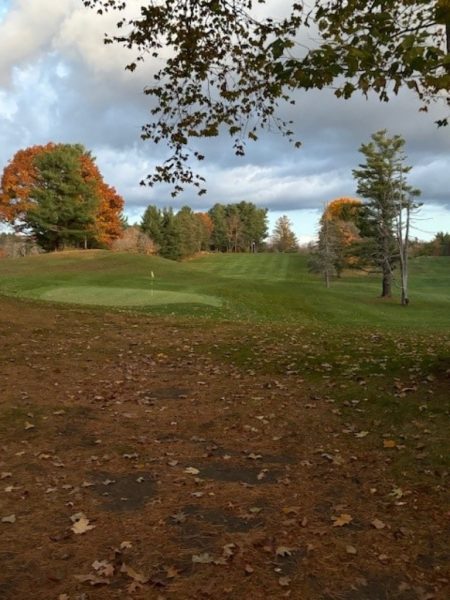
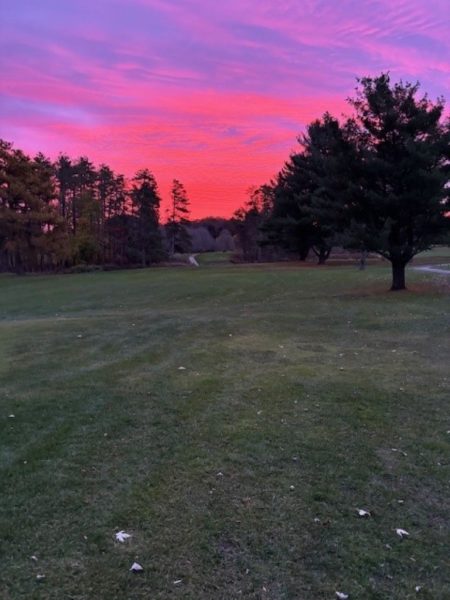
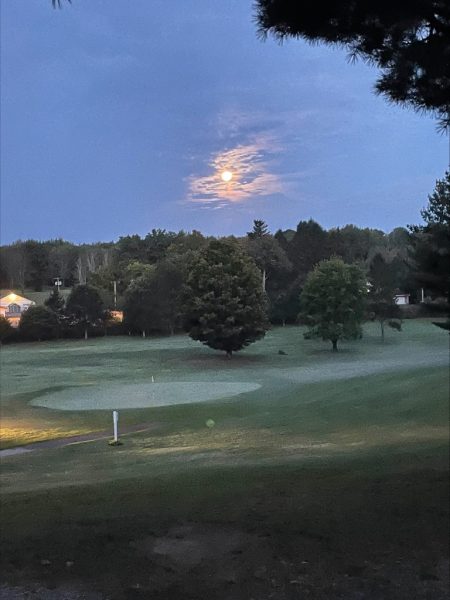
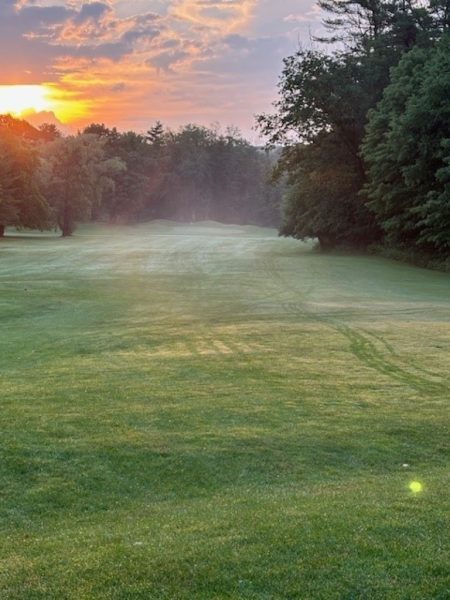
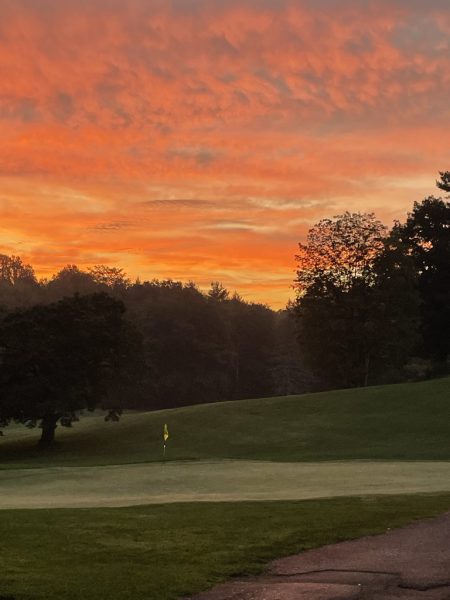
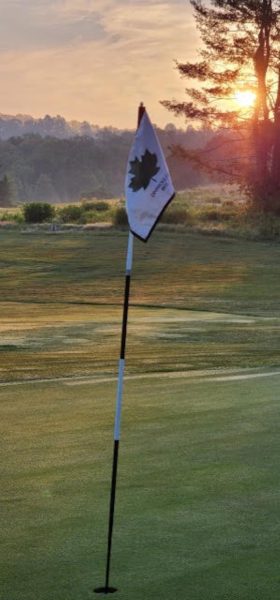
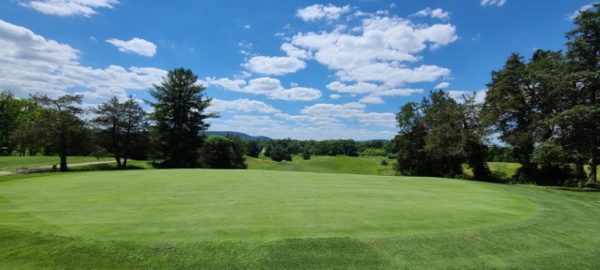
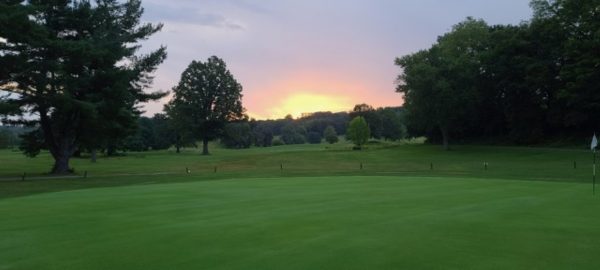
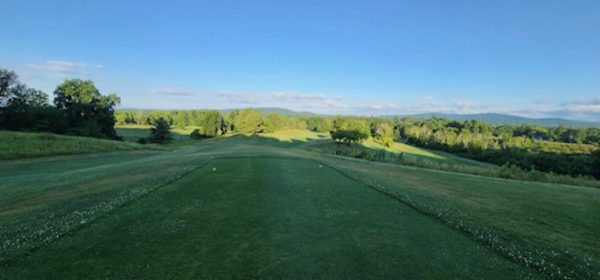
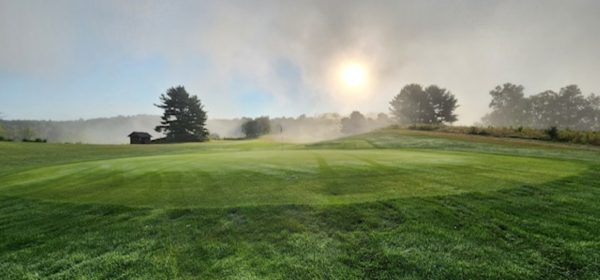

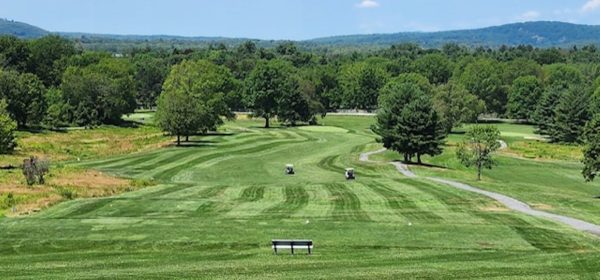


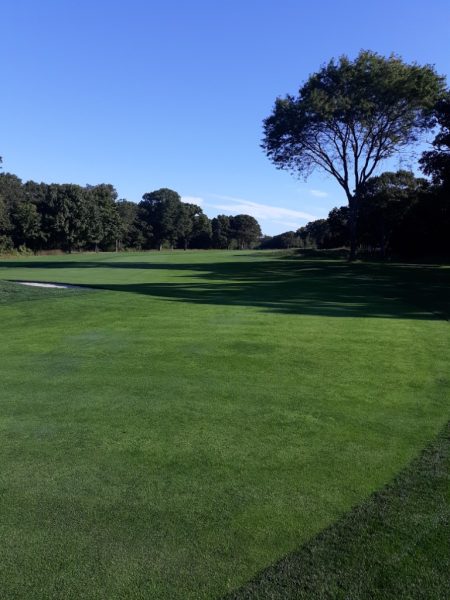

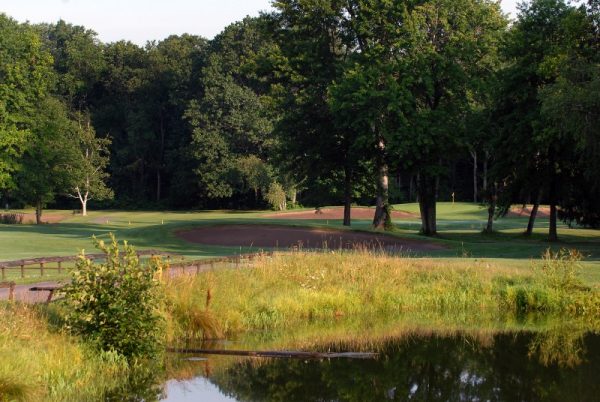
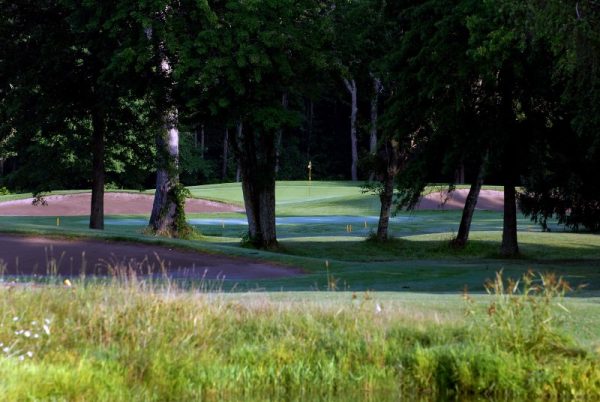
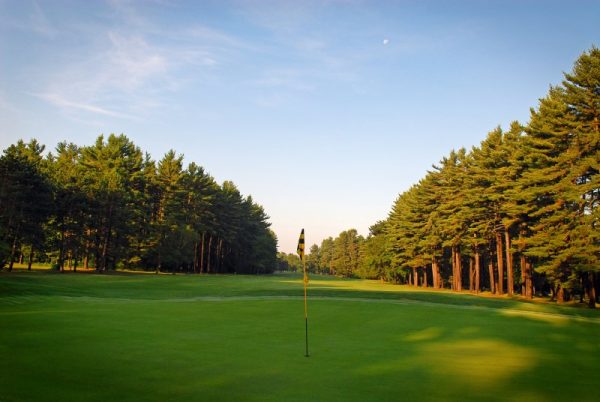
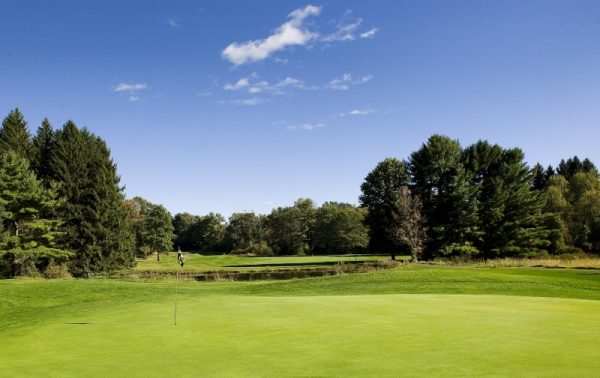
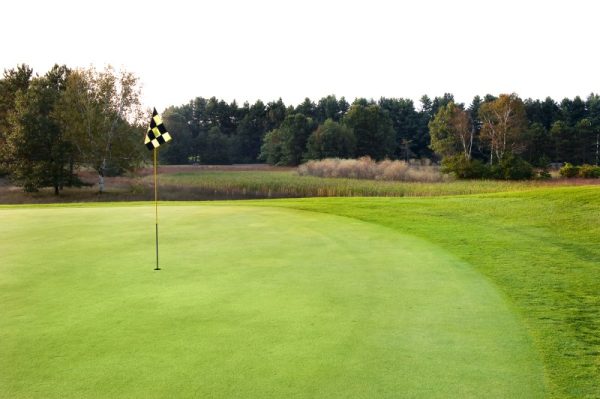
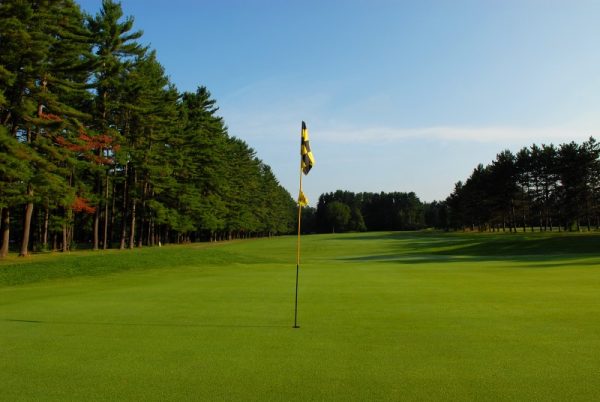
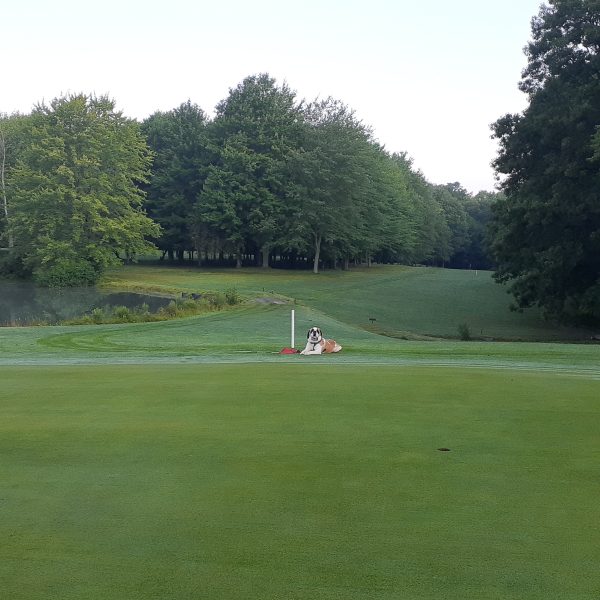
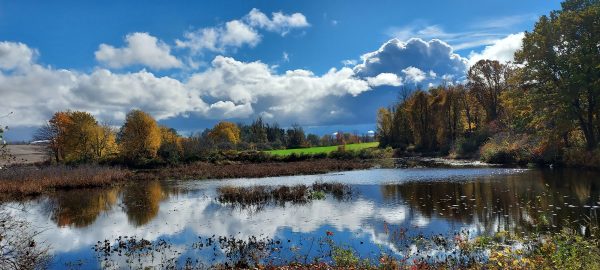
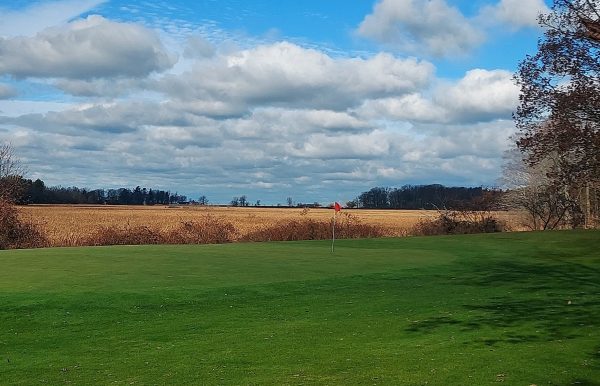
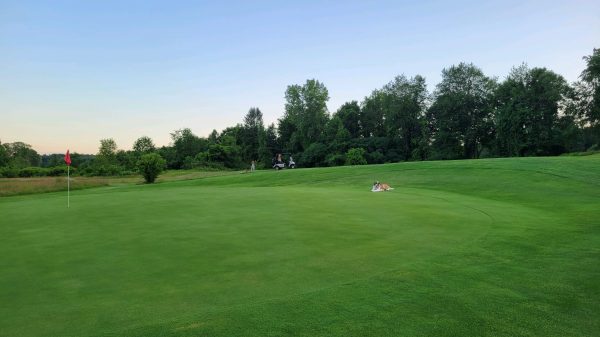
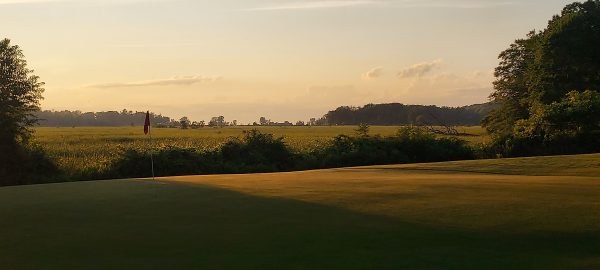
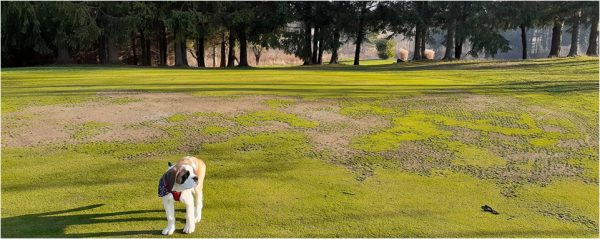

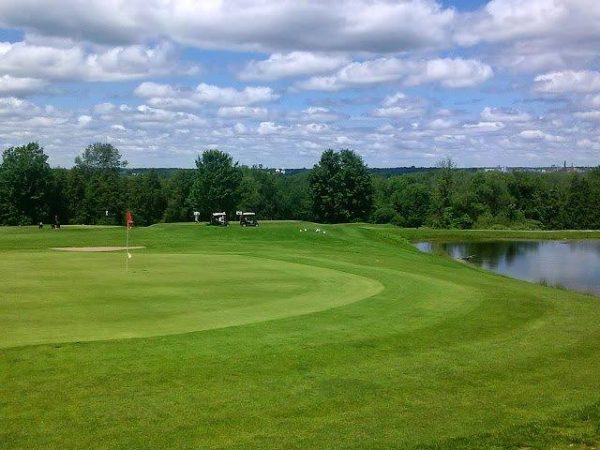
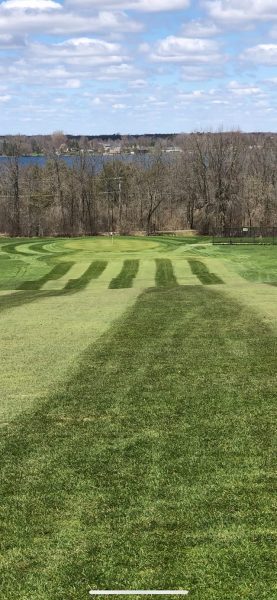

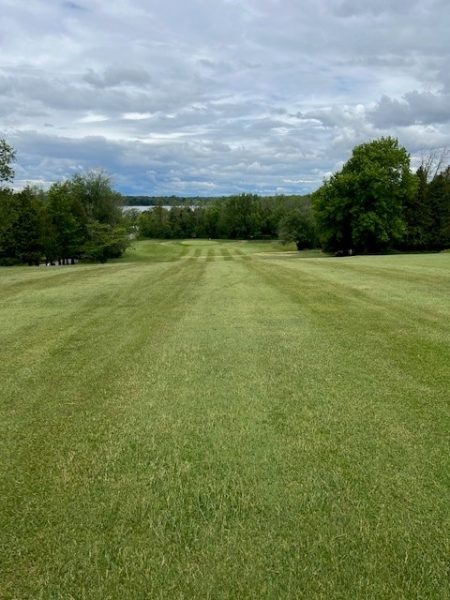
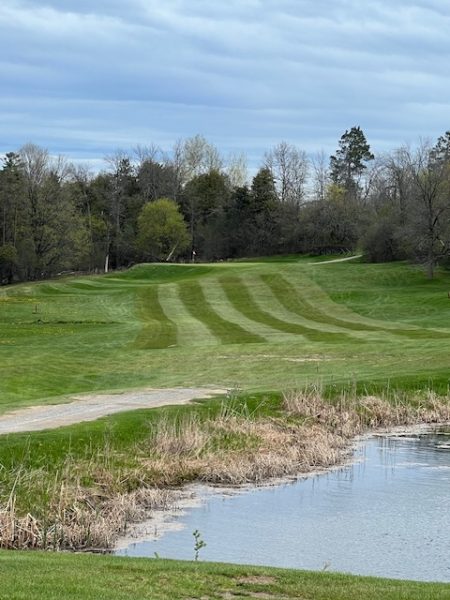
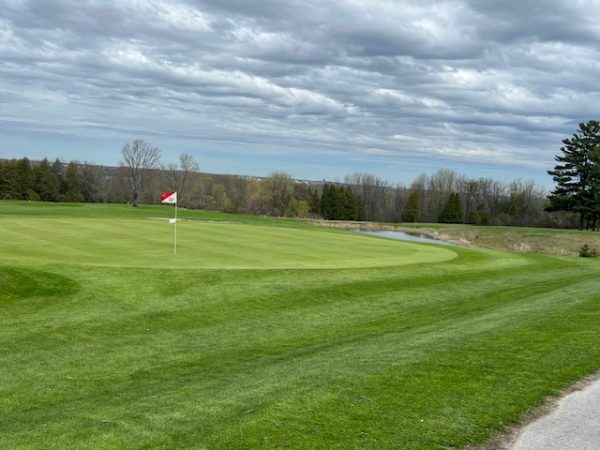
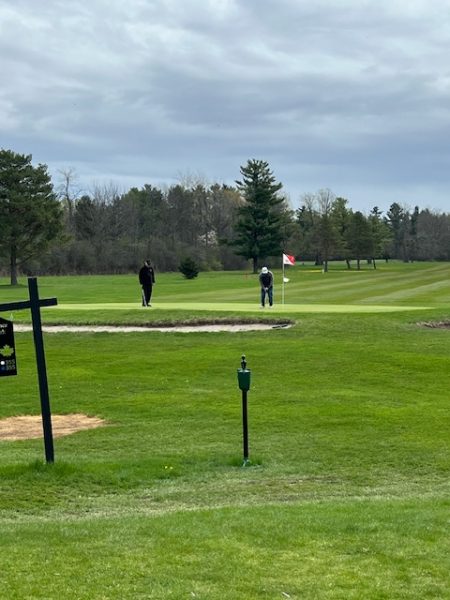
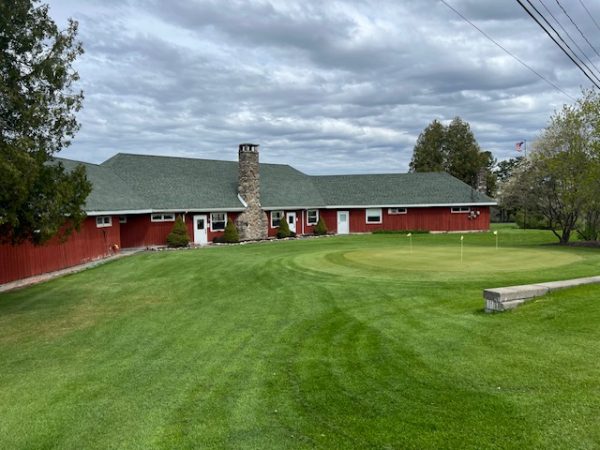
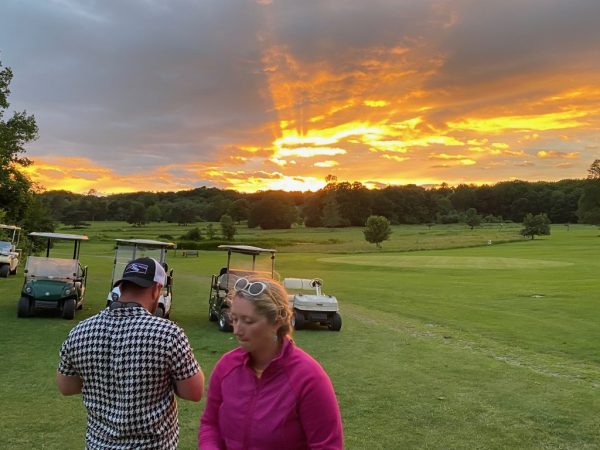
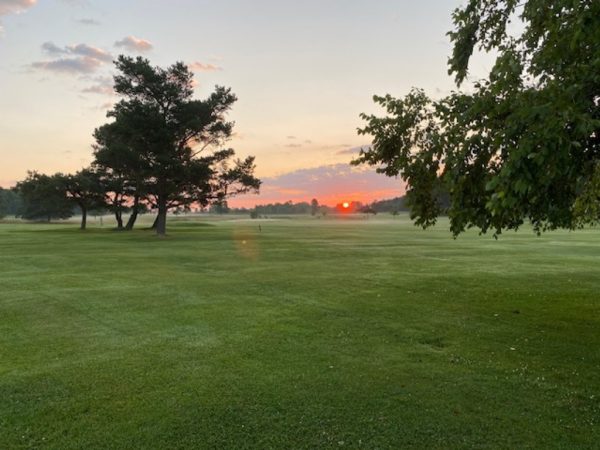
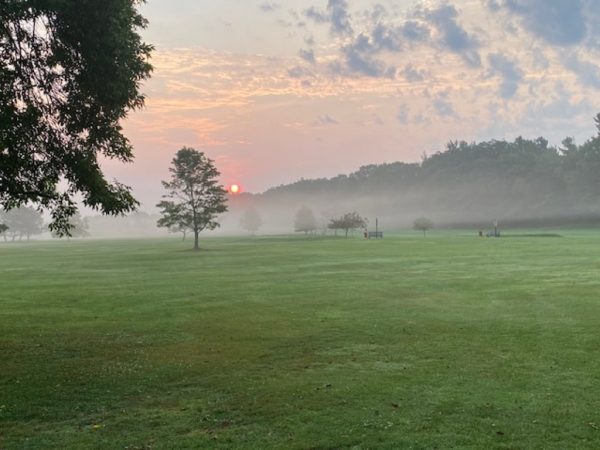
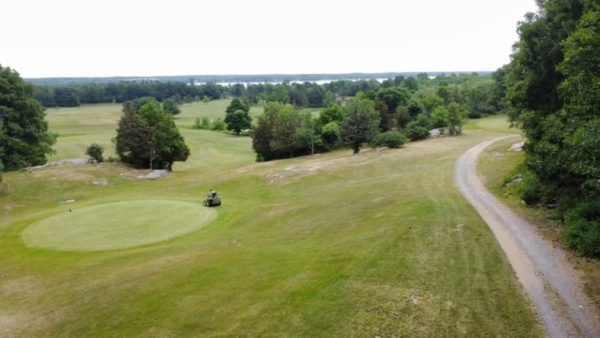

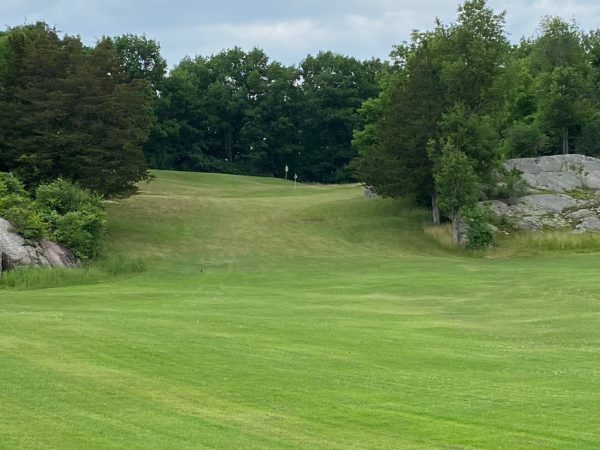








Jim Nalepa
Aug 27, 2021 at 11:48 am
why didn’t you fly into La Romana ?
Johnny Newbern
Aug 27, 2021 at 1:55 pm
Hi Jim.
Our preference was a direct flight out of DFW since we were traveling with our golf clubs!
Deborah Plaisance
Aug 27, 2021 at 8:27 am
Johnny Newbern transports you to a place where you feel his experience. His detailed highlights are magical, wanting you to hurry up and join in this beautiful adventure. Of the articles I have read he has given me an inside look that you only dream about in golfing!
Keep up the good work…oops play Johnny Newbern!
Johnny Newbern
Aug 27, 2021 at 1:57 pm
Thank you!!
Carmen
Aug 26, 2021 at 1:33 pm
It’s been too long – I’m glad, Mr. Newbern, your travel pieces are back. Looks like another place to add to my list, too.
Johnny Newbern
Aug 27, 2021 at 1:56 pm
Thank you for your kind words, Carmen!